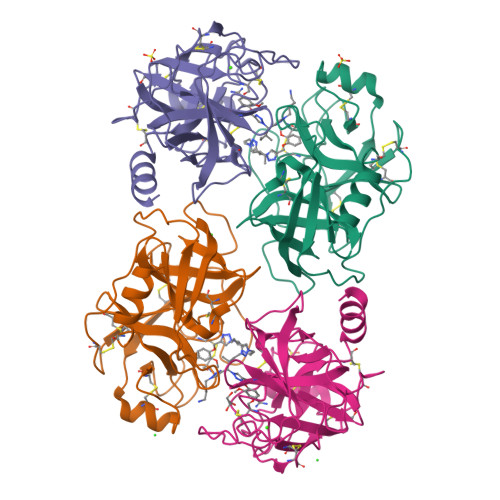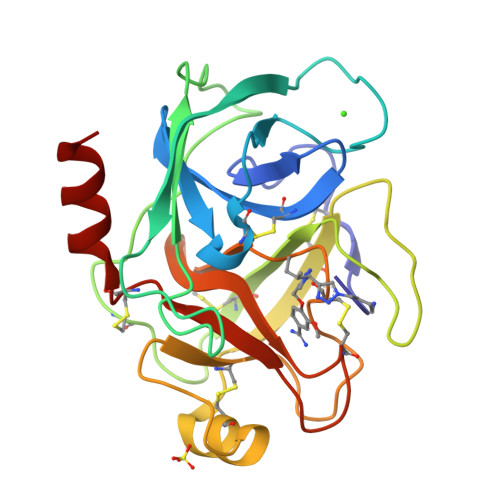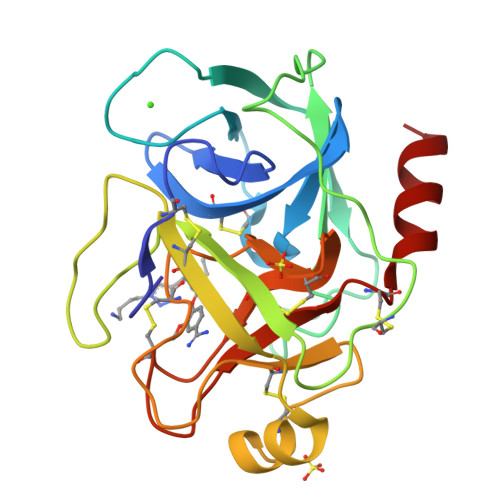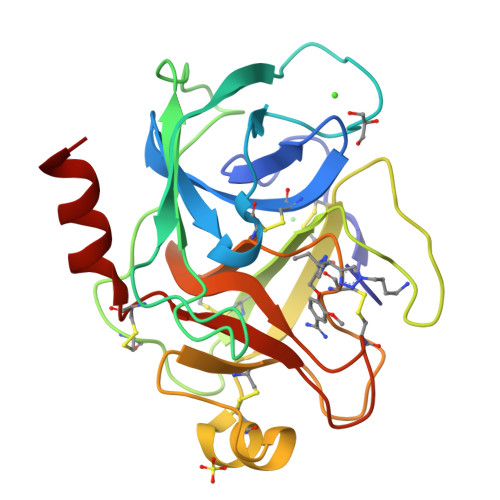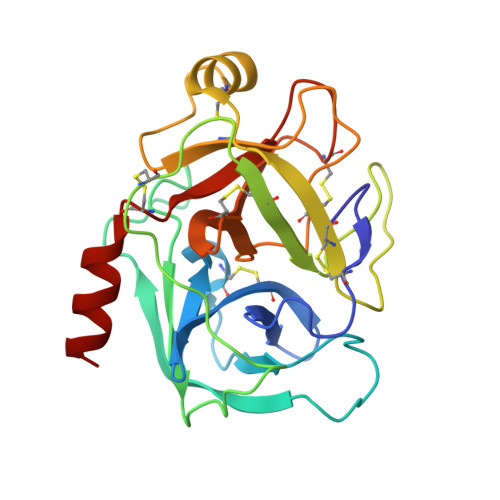Small molecule peptidomimetic trypsin inhibitors: validation of an EKO binding mode, but with a twist.
Lyu, R.L., Joy, S., Packianathan, C., Laganowsky, A., Burgess, K.(2022) Org Biomol Chem 20: 2075-2080
- PubMed: 35225309
- DOI: https://doi.org/10.1039/d1ob02127c
- Primary Citation of Related Structures:
7JWX - PubMed Abstract:
Examination of a series of naturally-occurring trypsin inhibitor proteins, led to identification of a set of three residues (which we call the "interface triplet") to be determinant of trypsin binding affinity, hence excellent templates for small molecule mimicry. Consequently, we attempted to use the Exploring Key Orientation (EKO) strategy developed in our lab to evaluate small molecules that mimic the interface triplet regions of natural trypsin inhibitors, and hence potentially might bind and inhibit the catalytic activity of trypsin. A bis-triazole scaffold ("TT-mer") was the most promising of the molecules evaluated in silico . Twelve such compounds were synthesized and assayed against trypsin, among which the best showed a K d of 2.1 μM. X-ray crystallography revealed a high degree of matching between an illustrative TT-mer's actual binding mode and that of the mimics that overlaid the interface triplet in the crystal structure. Deviation of the third side chain from the PPI structure seems to be due to alleviation of an unfavorable dipole-dipole interaction in the small molecule's actual bound conformation.
Organizational Affiliation:
Department of Chemistry, Texas A & M University, Box 30012, College Station, TX 77842-3012, USA. burgess@tamu.edu.








